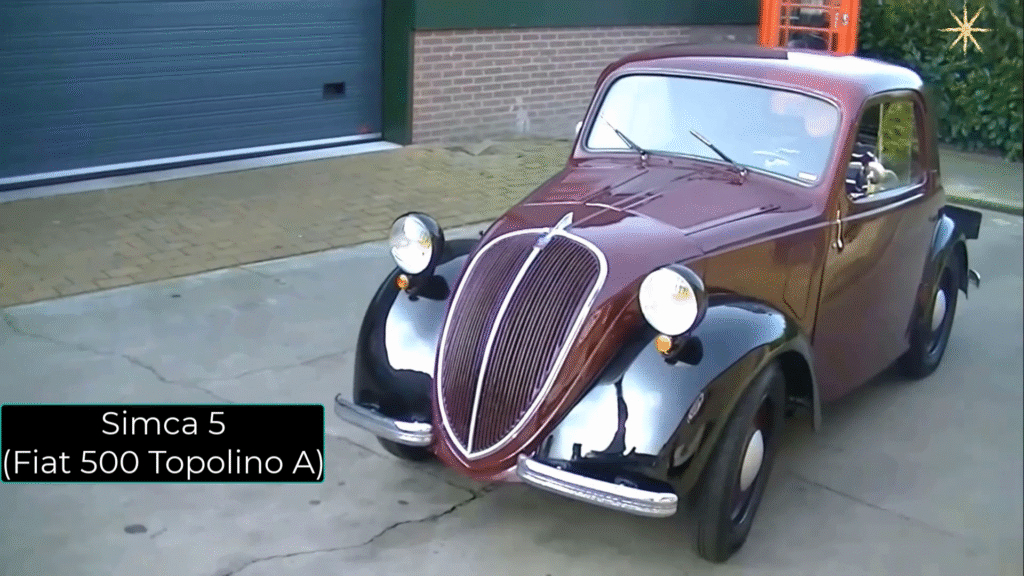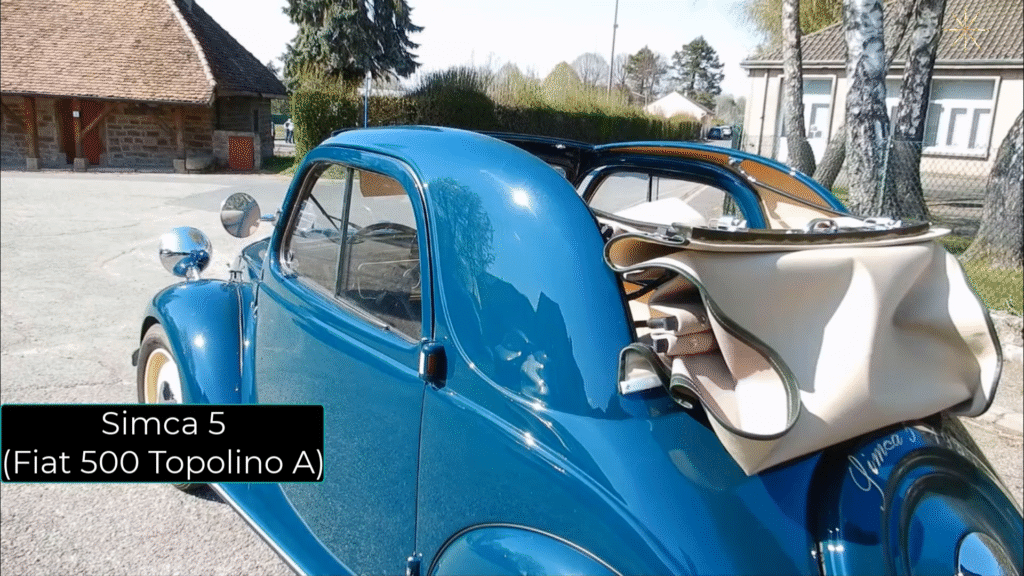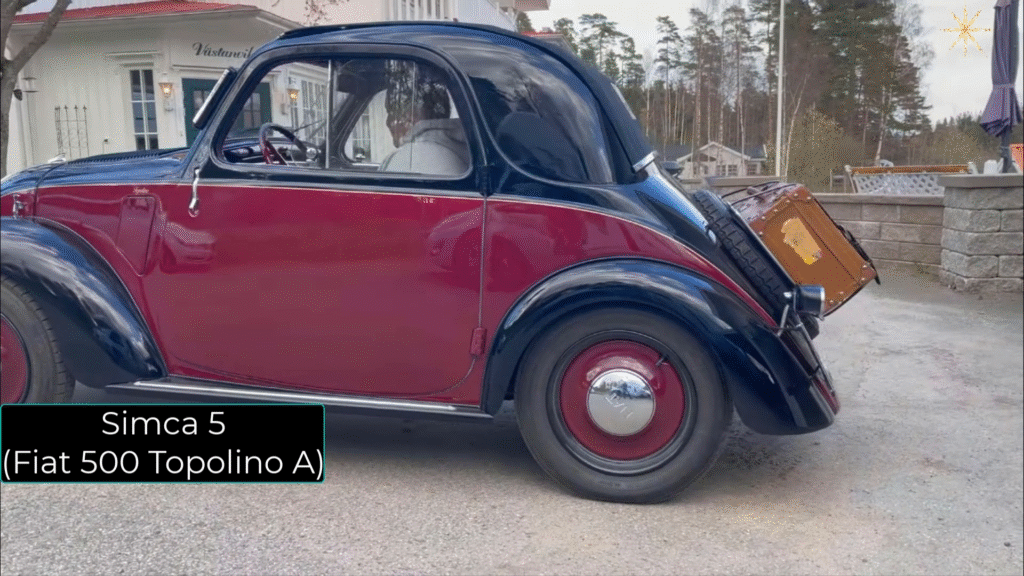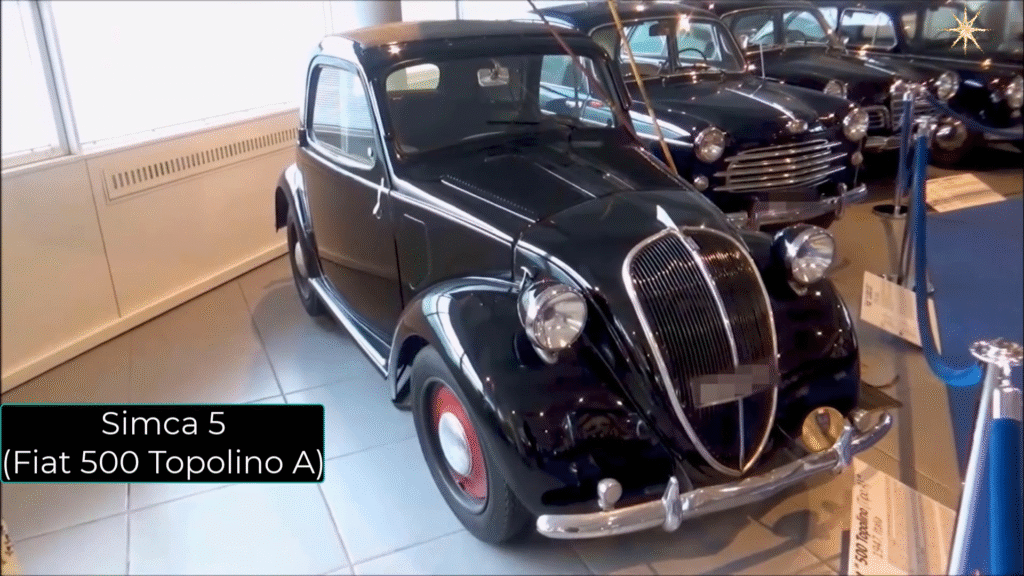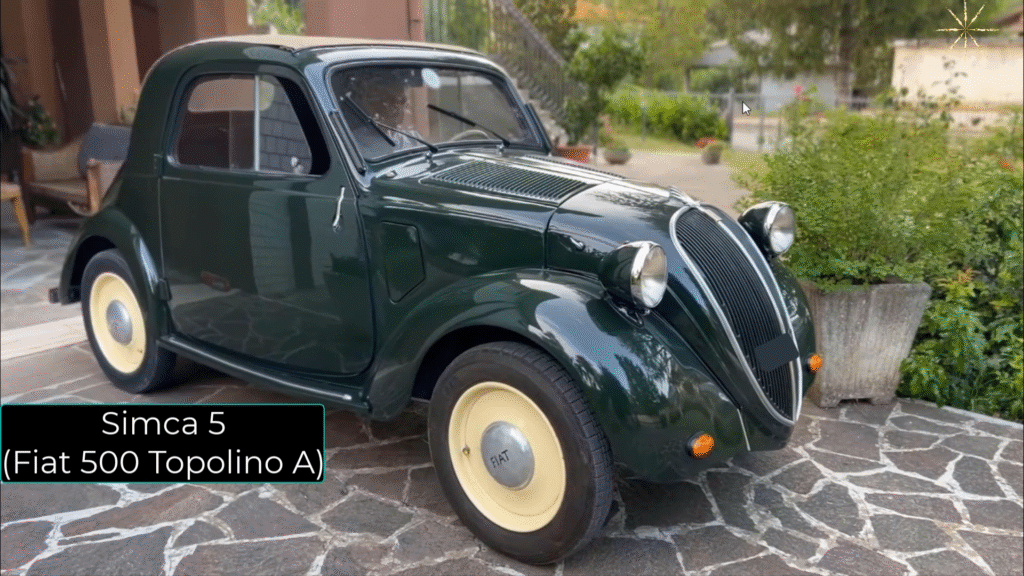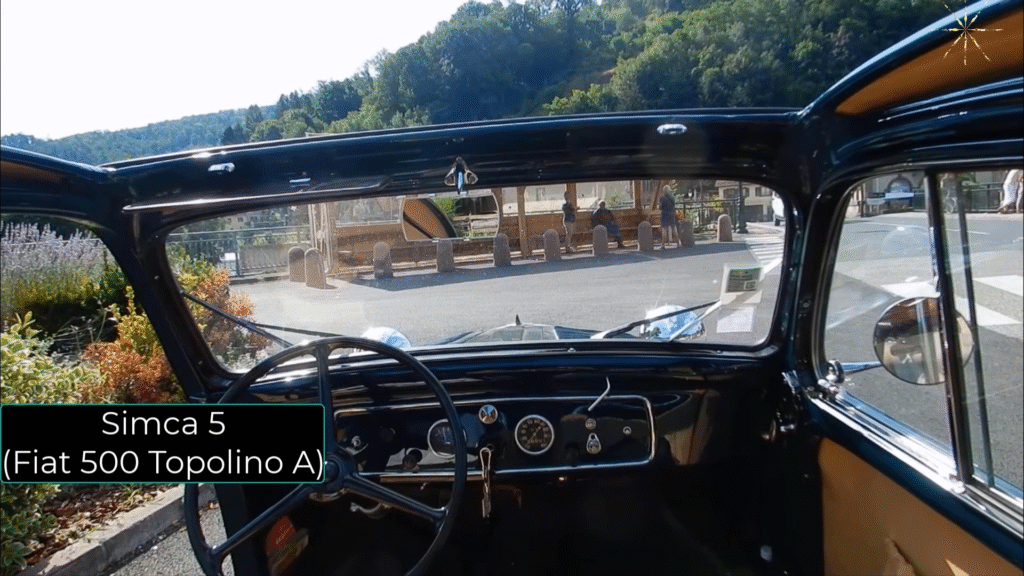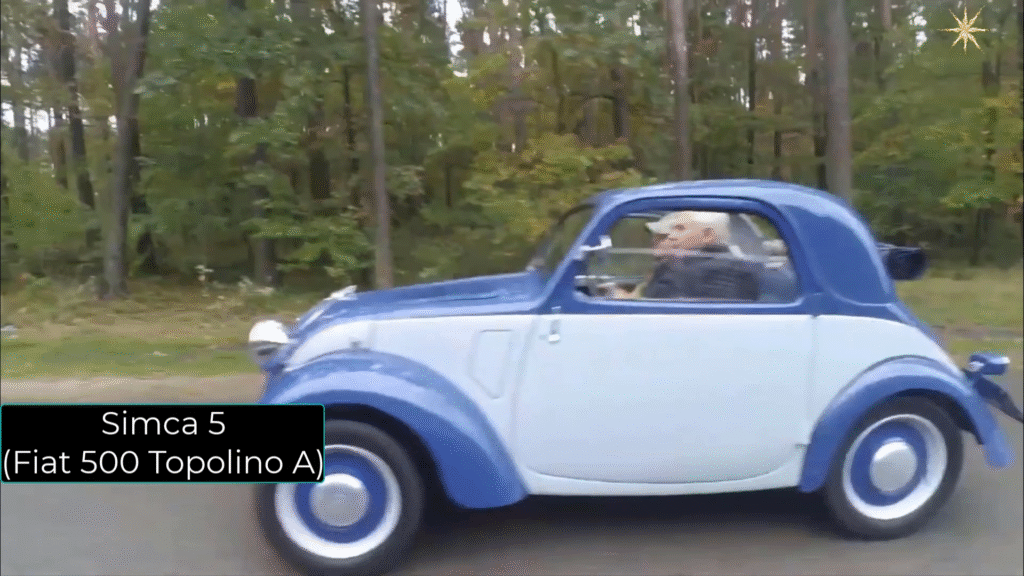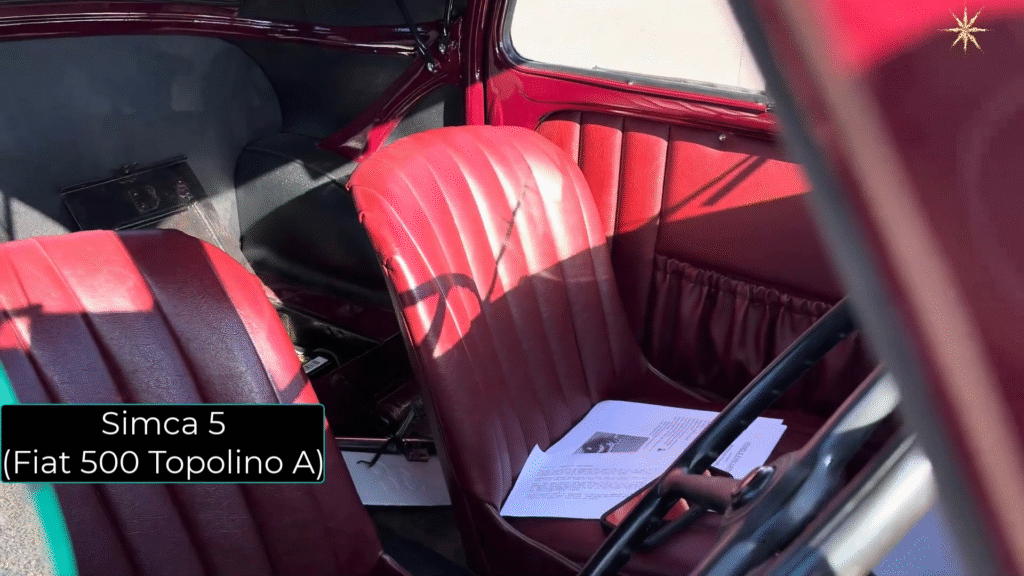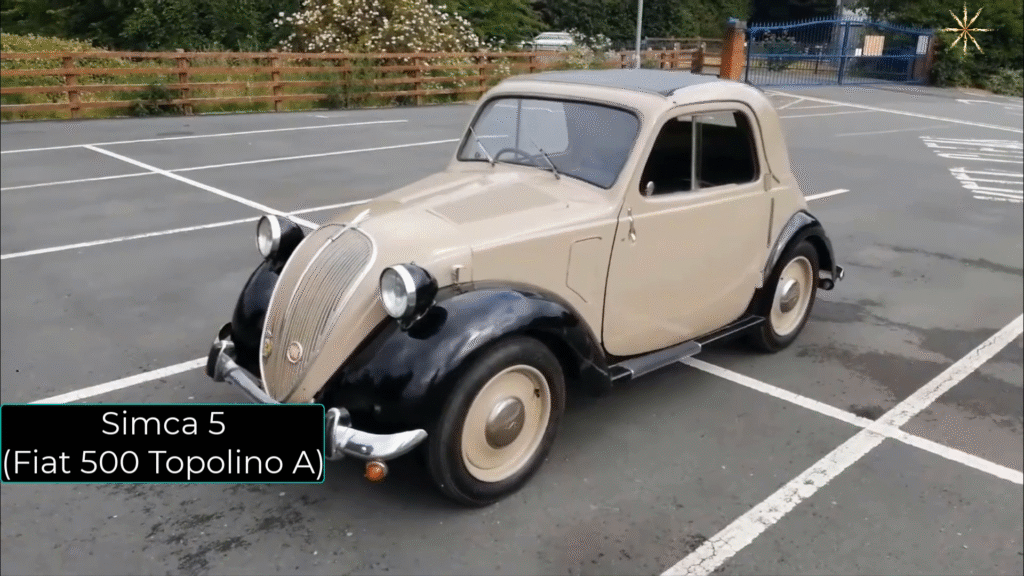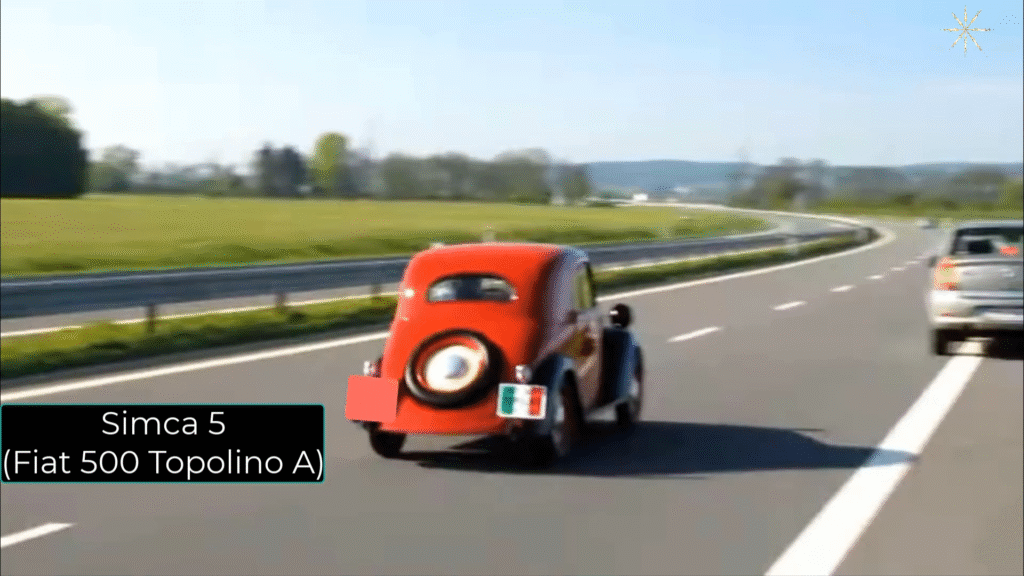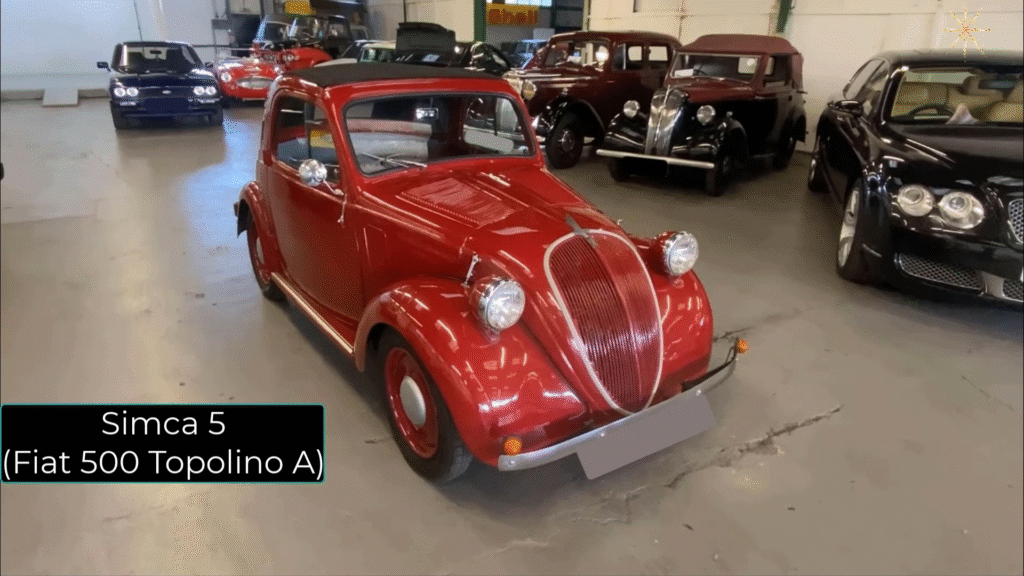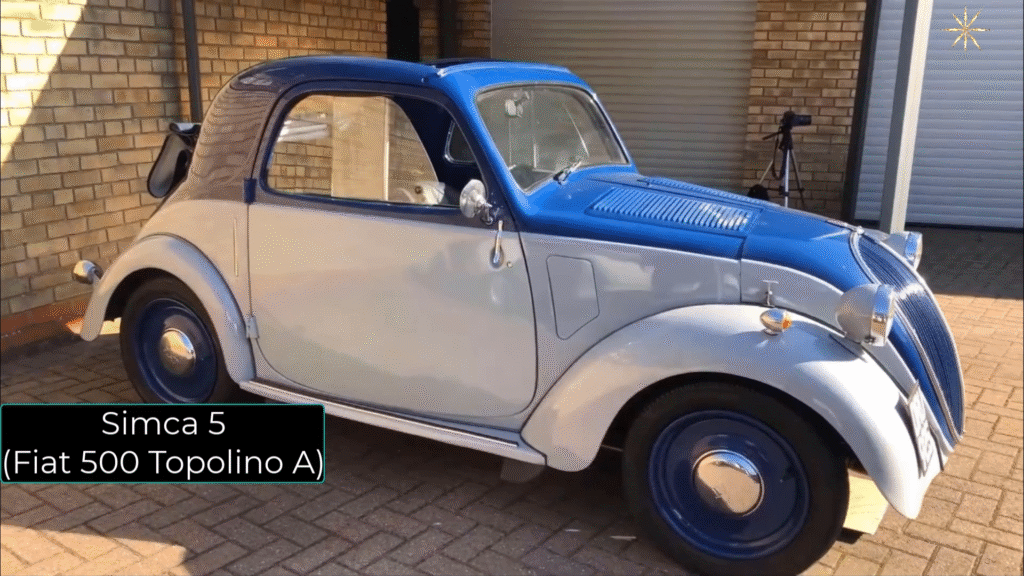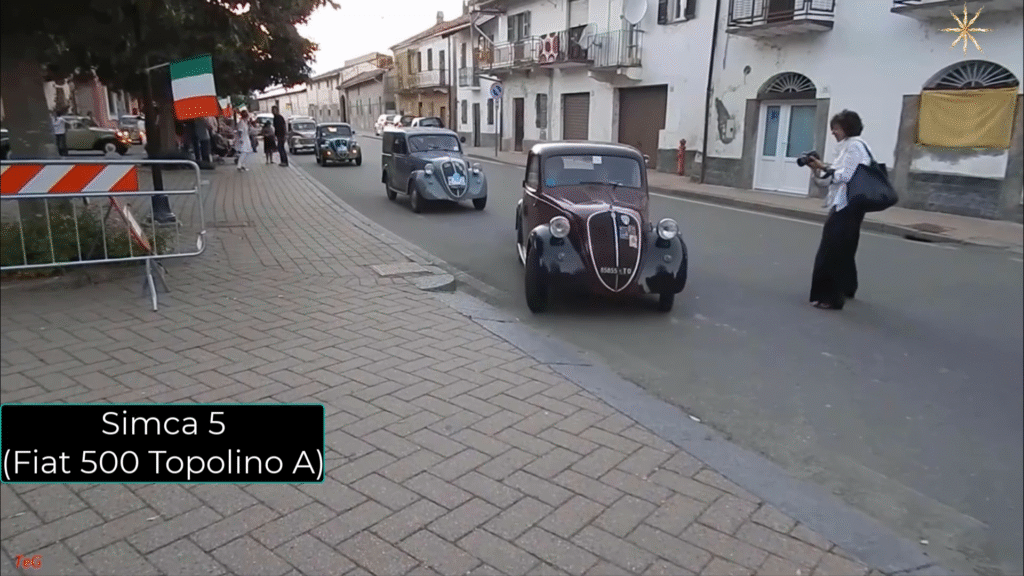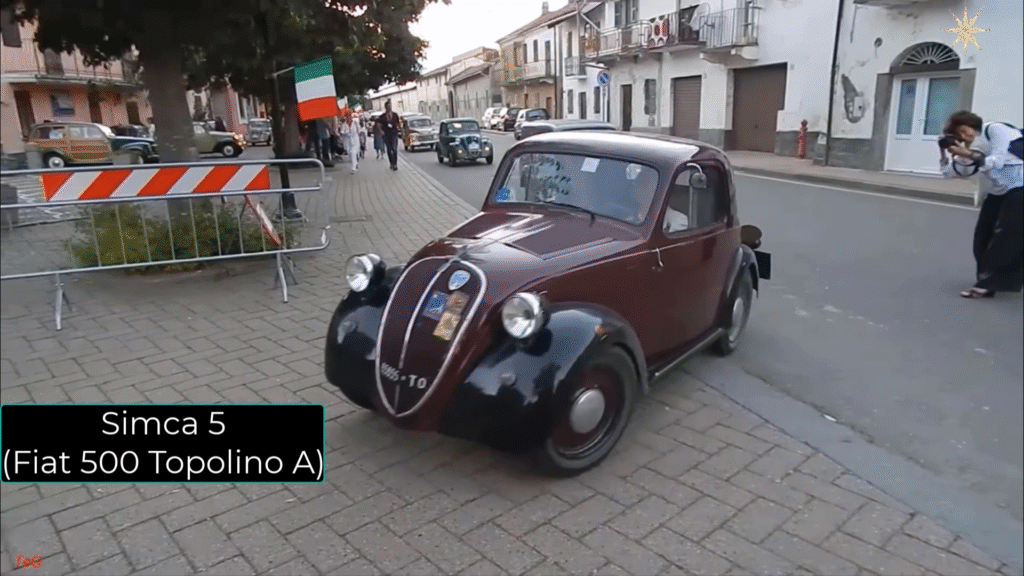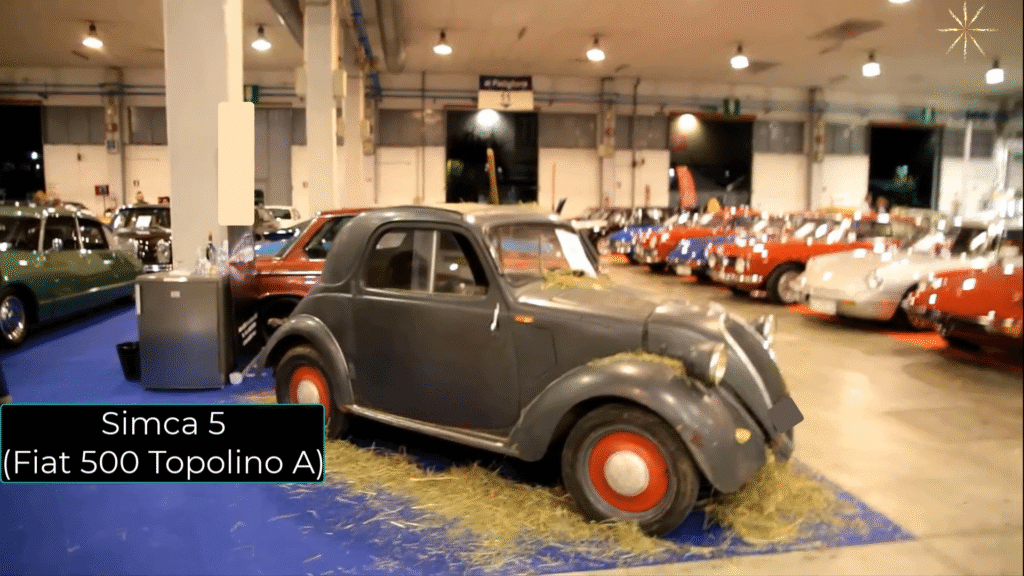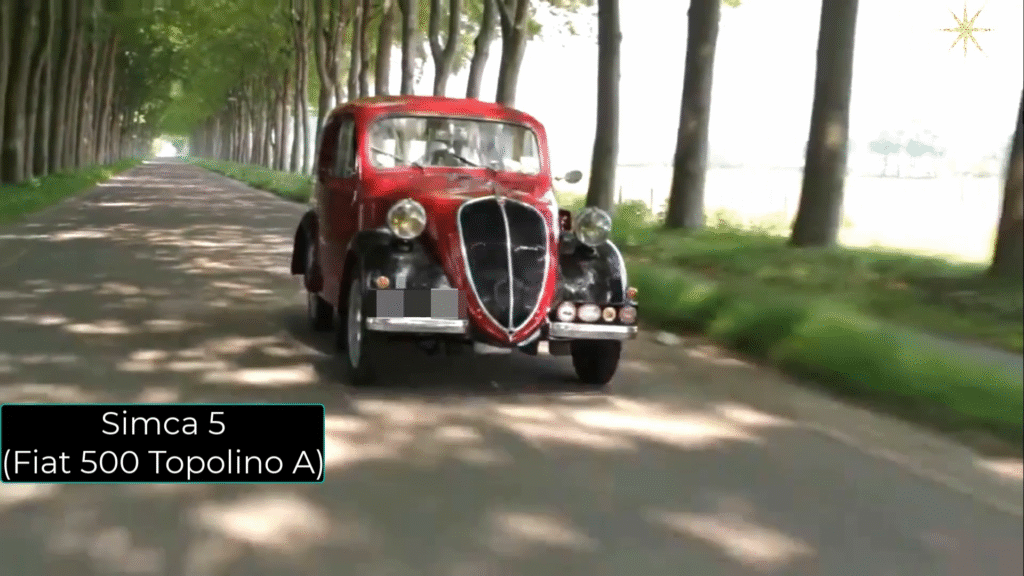
🚘 Simca 5 and the Fiat 500 Topolino: A Tale of Two Automotive Icons

In the heart of 1930s Europe, the demand for compact, economical transportation gave rise to two nearly identical yet culturally distinct vehicles: the Simca 5 and the Fiat 500 Topolino. These cars became pivotal in motorizing a continent, with roots tracing back to a shared design philosophy and a desire to put the average citizen behind the wheel.
🇮🇹 Fiat 500 Topolino A: Italy’s “Little Mouse”
Key Specifications
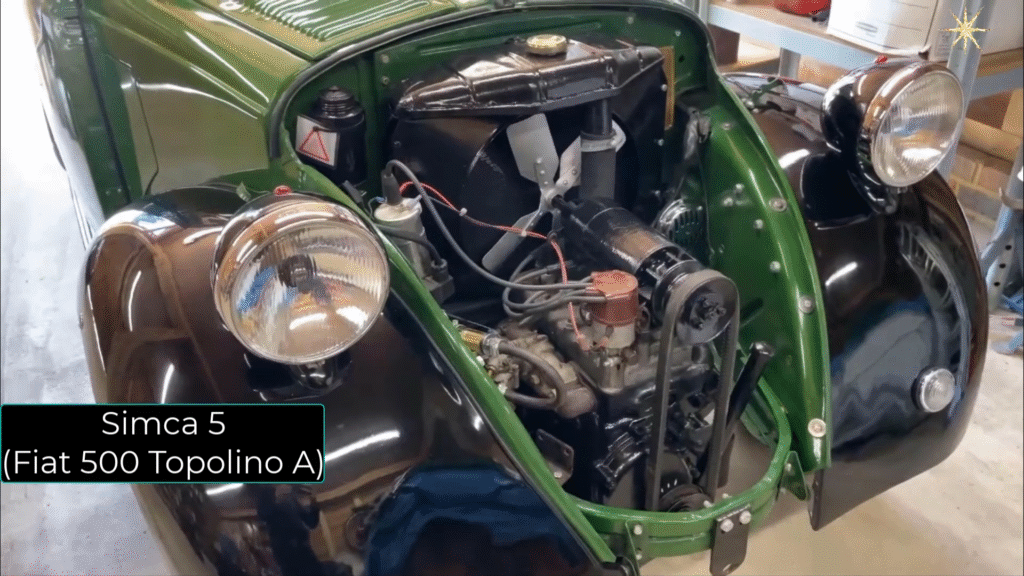
- Production Years: 1936–1955
- Manufacturer: Fiat (Italy)
- Engine: 569 cc inline-4, side-valve, water-cooled
- Horsepower: 13 hp
- Top Speed: 85 km/h (53 mph)
- Transmission: 4-speed synchromesh manual
- Brakes: Hydraulically operated drum brakes on all wheels
Notable Features
- Radiator positioned behind the engine, contributing to a low, aerodynamic nose
- Independent front suspension—advanced for its class
- Renowned for exceptional fuel economy
- Affectionately known as the Topolino, meaning “little mouse” and also Italy’s name for Mickey Mouse
The Fiat 500 Topolino A was among the smallest production cars globally at the time. With a blend of cutting-edge design and affordability, it became a symbol of progress in pre- and post-war Italy.
🇫🇷 Simca 5: France’s Answer to Urban Mobility
Key Specifications
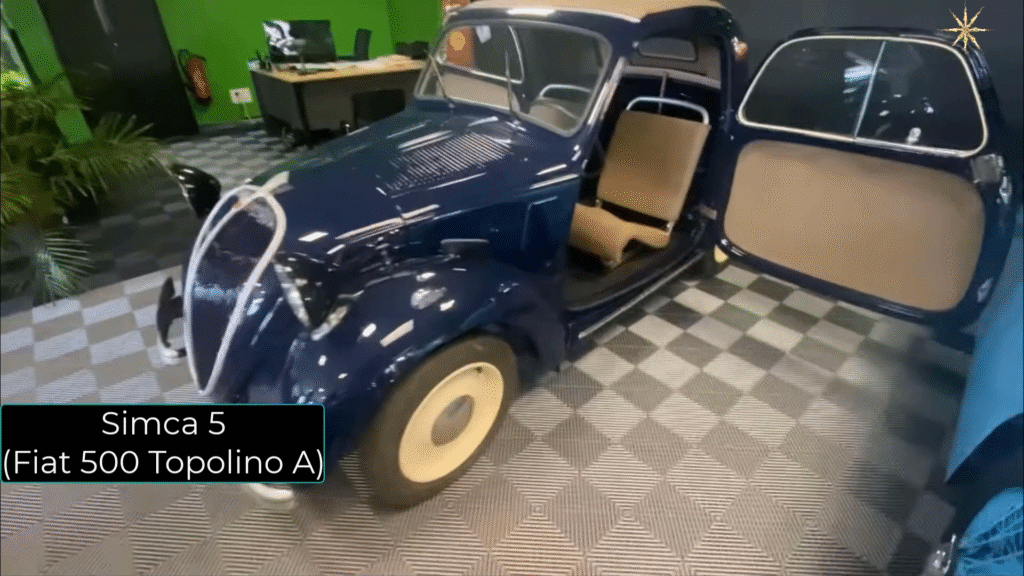
- Production Years: 1936–1948
- Manufacturer: Simca (France)
- Engine: 570 cc inline-4
- Fuel Economy: Approx. 4.5 L/100 km (51.75 mpg)
- Electrical System: 12-volt—advanced for the era
Notable Features
- Built at Simca’s Nanterre plant near Paris
- Launched three months before the Fiat Topolino
- Nearly identical to the Topolino in design and performance
- Tailored for the French market, with specific updates such as the upgraded electrical system
Though a near clone of the Fiat, the Simca 5 carved its own path. Launched ahead of its Italian counterpart, it offered French drivers a practical and modern vehicle that suited the nation’s needs during economically challenging times.
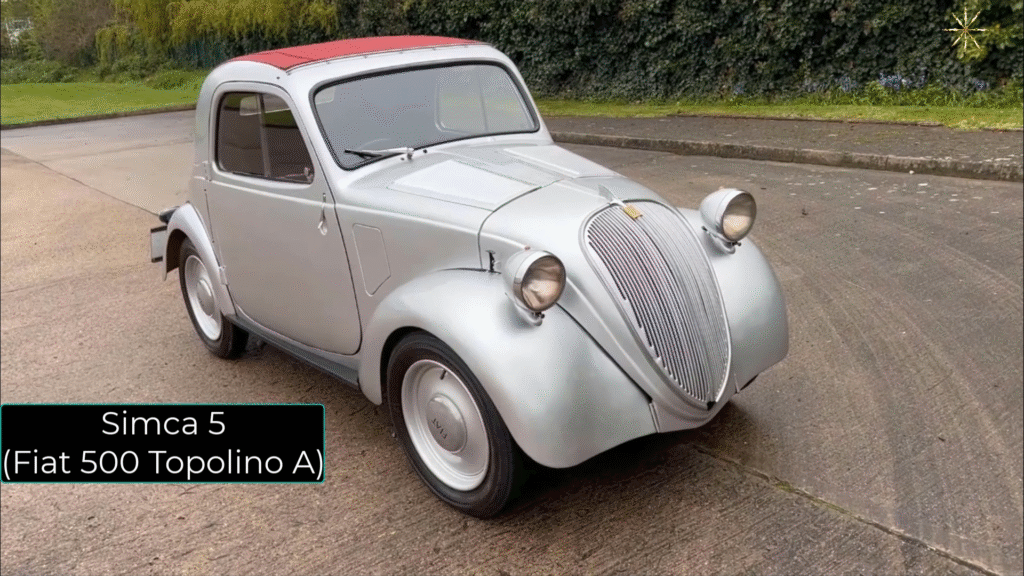
🔍 Key Differences Between the Simca 5 and the Fiat 500 Topolino
| Feature | Fiat 500 Topolino A | Simca 5 |
|---|---|---|
| Production Location | Italy (Fiat) | France (Simca) |
| Launch Date | 1936 (after Simca 5) | 1936 (3 months earlier) |
| Market Focus | Italian consumers | French consumers |
| Electrical System | 6-volt (standard) | 12-volt (advanced) |
| Design & Build | Original design | Licensed adaptation |
Despite their similarities, these two cars reflect the nuanced automotive strategies of their respective countries during a transformative period in European history.

🏁 Legacy and Cultural Impact
Both the Fiat 500 Topolino and the Simca 5 revolutionized personal transportation in the mid-20th century. Their small size, low cost, and efficiency made car ownership attainable for the average family. The innovations in design and engineering set the tone for generations of compact cars and inspired a wave of urban mobility solutions still relevant today.
They remain beloved by collectors and automotive historians alike, representing a milestone in European automotive history.
🛒 Where to Buy a Simca 5 or Fiat 500 Topolino
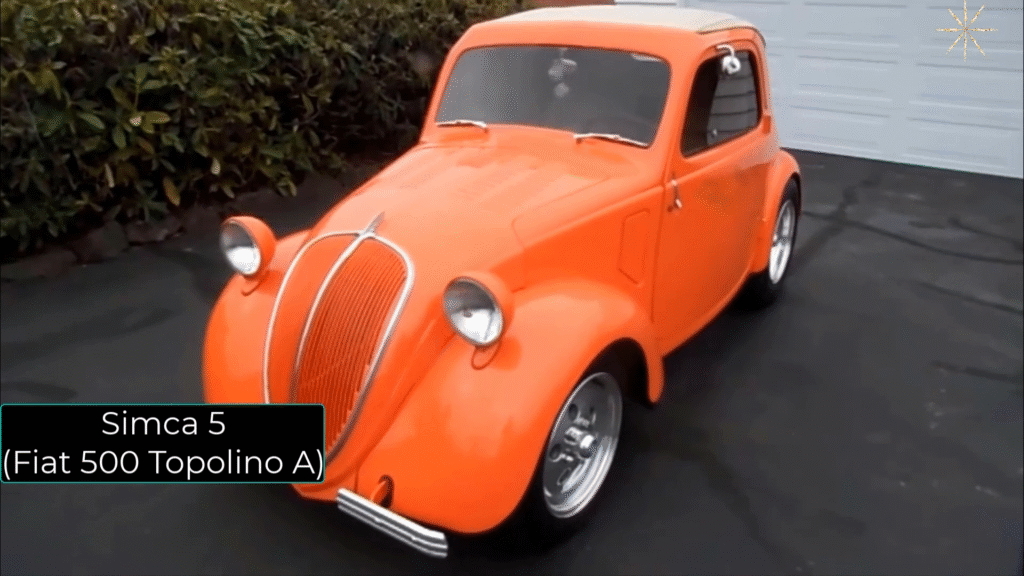
If you’re looking to purchase a Simca 5 or a Fiat 500 Topolino, several trusted platforms and marketplaces cater to classic car enthusiasts and collectors. Below are some of the best places to begin your search:
🔗 Top Online Marketplaces
- Classic Trader
A European marketplace specializing in classic cars. Filter by model, condition, and location. - Hemmings
One of the most recognized platforms for vintage and collectible vehicles in the U.S., including rare imports like the Topolino and Simca 5. - PreWarCar.com
Focused on pre-1945 vehicles. A go-to for historically significant models and restoration projects. - Bonhams Auctions
Renowned for high-end collector car auctions where well-preserved or restored examples of these classics may appear. - Bring a Trailer
A popular auction site with active community discussions, detailed listings, and a robust bidding system for vintage vehicles.
🧰 Pro Buying Tips
- Always request a complete vehicle history and confirm the car’s authenticity.
- Look for restoration documentation and original parts where possible.
- Consider hiring a third-party vintage car specialist to perform a pre-purchase inspection.
- Join online forums and Facebook groups dedicated to Fiat and Simca enthusiasts—many cars are sold privately before hitting mainstream platforms.
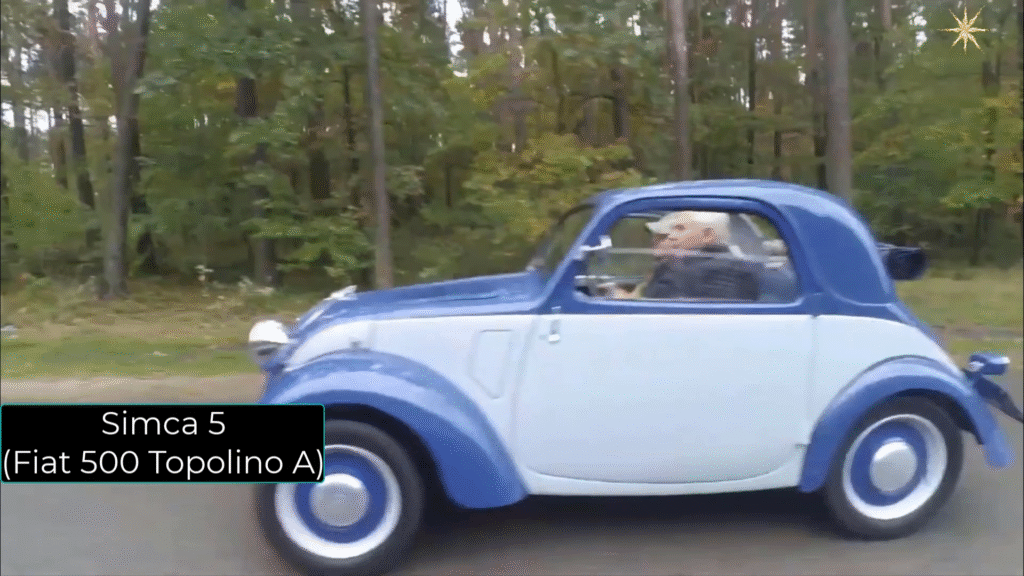
❓ FAQ: Simca 5 and the Fiat 500 Topolino
Q1: Are the Simca 5 and the Fiat 500 Topolino the same car?
A: Nearly. The Simca 5 is based on the same design as the Fiat 500 Topolino but was produced in France and featured certain localized changes, such as a 12-volt electrical system.
Q2: Which came first, the Simca 5 or the Fiat Topolino?
A: The Simca 5 was launched three months before the Fiat 500 Topolino, although Fiat’s version entered full production more quickly.
Q3: Why was the Topolino so popular in Italy?
A: It was affordable, efficient, and innovative—ideal for Italians seeking mobility during a period of economic recovery and modernization.
Q4: Is the Simca 5 collectible today?
A: Yes! Due to its rarity and historical significance, the Simca 5 is a sought-after vintage car among collectors, especially in France.
Q5: How does the Topolino influence modern Fiat designs?
A: The Topolino inspired the spirit behind the Fiat 500 reboot in the 21st century—compact, stylish, and urban-friendly.
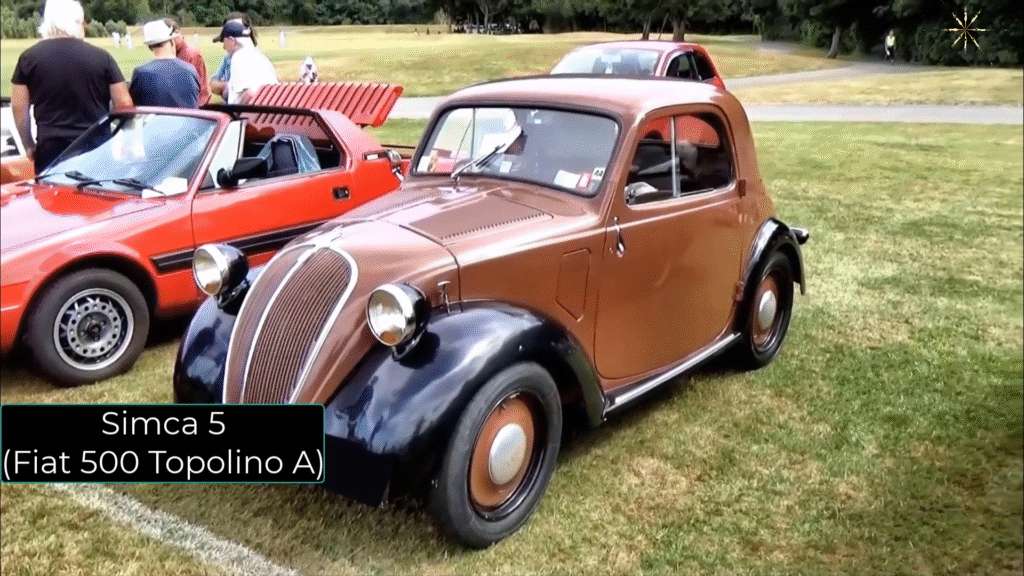
✍️ Final Thoughts
The Simca 5 and the Fiat 500 Topolino represent more than just innovative engineering—they symbolize the democratization of mobility in pre- and post-war Europe. Their impact still echoes in the DNA of modern compact cars. Whether you’re an automotive historian, collector, or just love vintage European style, these two cars deserve a closer look.
